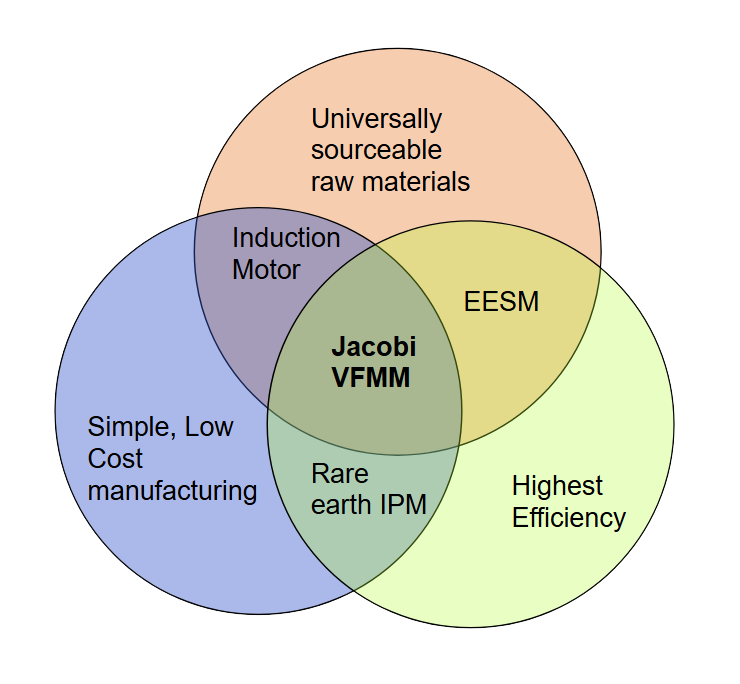
The word’s best rare-earth electric machine
Scroll to learn more about the difference that a Jacobi Variable Flux Memory Motor (VFMM) can make
The Jacobi VFMM Difference
Traditional motor technologies are locked into fixed efficiency zones
—optimized for only one operating condition, and compromising elsewhere.
Jacobi VFMM technology dynamically shifts the efficiency zone
—align with real-time performance demands for peak efficiency
The Result?
One motor that adapts like four
From launch to cruise, uphill to regen, VFMM delivers the performance of multiple motors
We’ re showing that you don’t have to rely on rare-earths to achieve high performance, high efficiency, and high power density
Range Compared using Tesla Model 3 Vehicle Model

Some say it is science fiction…
“In an ideal brushless drive, the strength of the magnetic field produced by the permanent magnets would be adjustable. When maximum torque is required, especially at low speeds, the magnetic field strength (B) should be maximum – so that inverter and motor currents are maintained at their lowest possible values. This minimizes the I² R (current² resistance) losses and thereby optimizes efficiency. Likewise, when torque levels are low, the B field should be reduced such that eddy and hysteresis losses due to B are also reduced. Ideally, B should be adjusted such that the sum of the eddy, hysteresis, and I² losses is minimized. Unfortunately, there is no easy way of changing B with permanent magnets.”
-Wally Rippel, 2007, Tesla Motors
“A large portion of the time people spend driving is in low-torque highway situations. However, there are a lot of motors that offer great 0-60 MPH performance but are very inefficient in the low-torque highway-speed regions. So the question is, can I have everything – both high efficiency and high performance? The answer, unfortunately, is no. But you can make intelligent choices between things that are competing with each other.”
-Konstantinos Laskaris, 2016, Tesla Motors

… but at Jacobi, we’ve spent the last seven years proving the improbable
in the lab, on the track, and in the field
Watch the video or find out more about the





